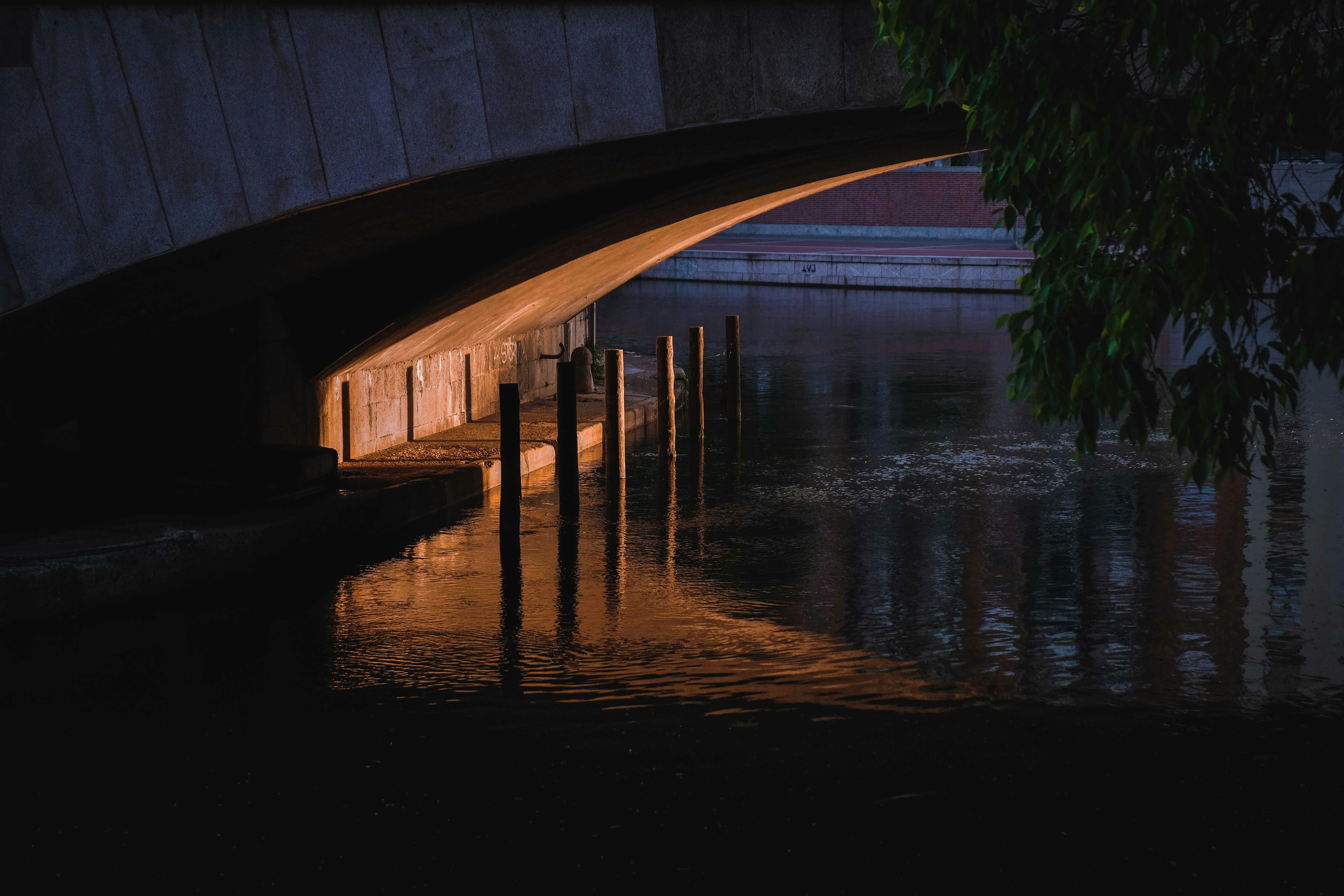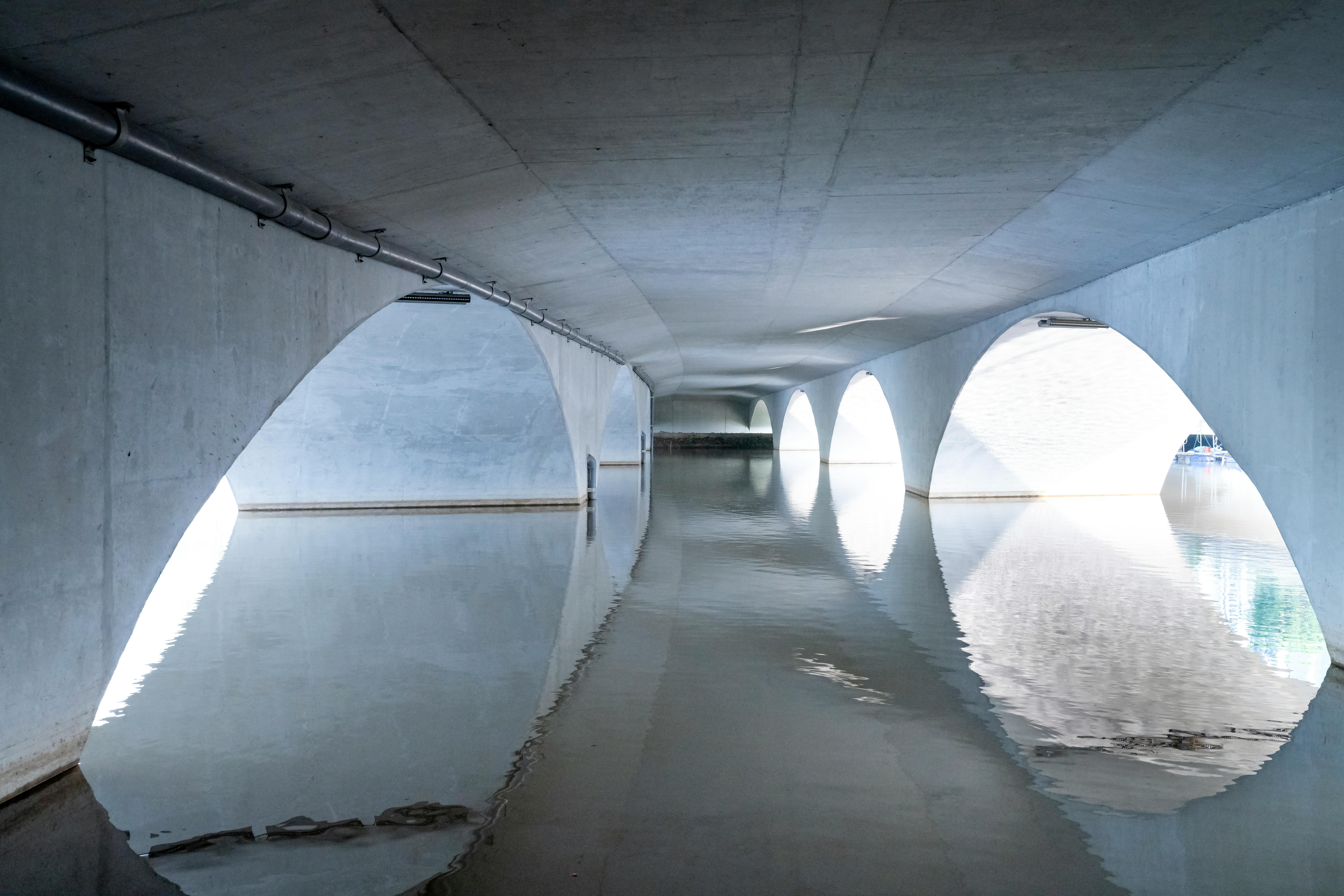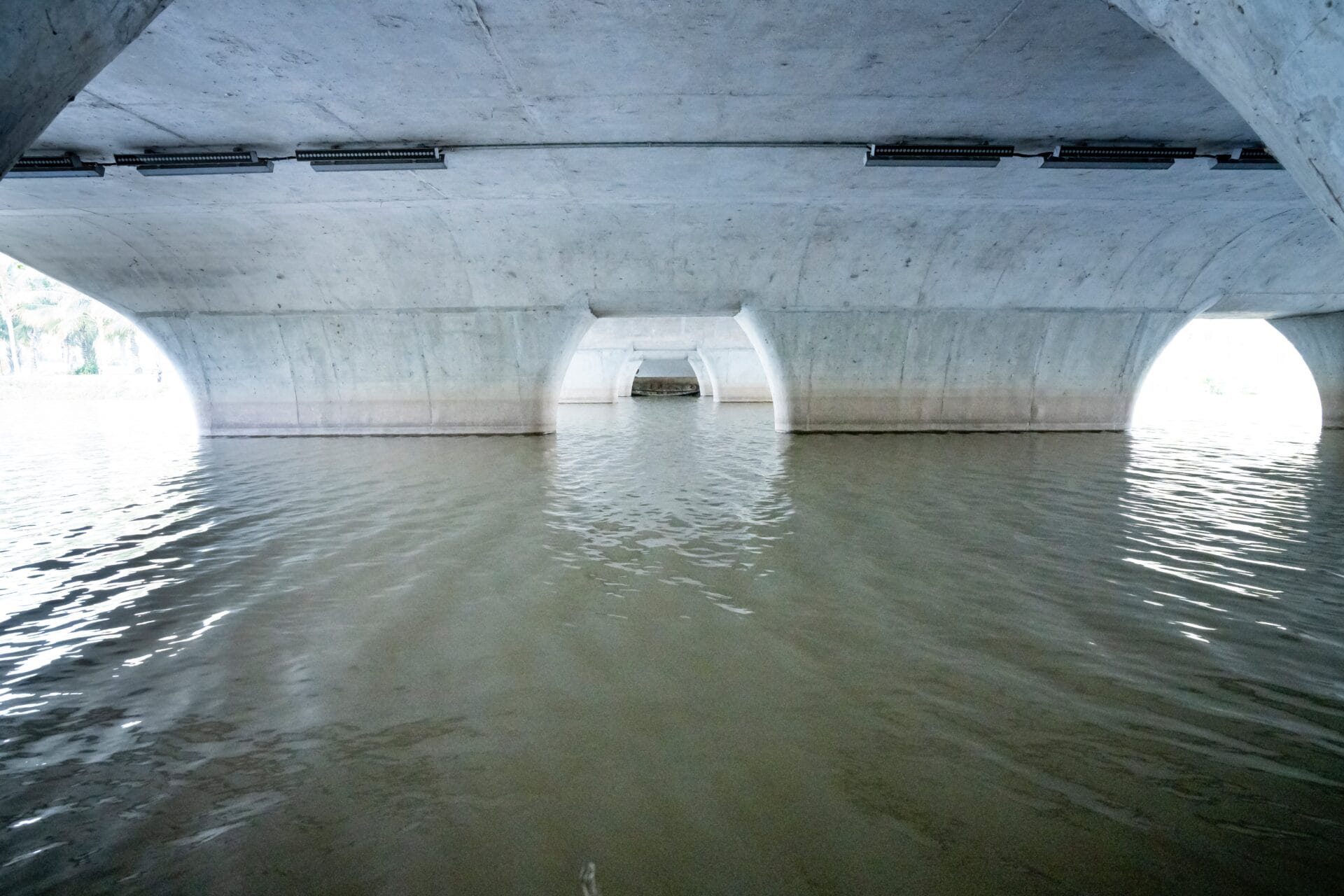Finding a water leak under a concrete driveway can be a tricky process. It requires some patience and know-how to properly locate and identify the source of the leak. Fortunately, there are several methods that can be used to help pinpoint the exact location of the leak. In this guide, we’ll go over how to find a water leak under a concrete driveway, what tools you’ll need, and what steps you should take to ensure an effective repair.To locate a water leak under a concrete driveway, start by removing any dirt or debris from the surface of the driveway. Next, use a garden hose to spray water in various places along the driveway. Look for any areas where water is pooling or running off in an unusual direction. This could indicate a leak. If necessary, use a special moisture meter to further pinpoint the exact location of the leak.
Using Electronic Leak Detection Equipment
One of the most effective ways to detect a water leak under concrete is by using electronic leak detection equipment. This type of equipment uses advanced sensors and computer-aided analysis to detect the presence of water underneath concrete and other materials. By utilizing specialized microphones, heat detectors, and other technologies, electronic leak detection can provide quick and accurate readings that can help pinpoint the exact location of a water leak. This method is especially useful for pinpointing leaks in areas that are difficult to access, such as under concrete slabs or behind walls.
Visual Inspection
Another method for finding water leaks under concrete is visual inspection. This involves looking for signs that indicate the presence of moisture, such as wet spots on the surface of the concrete or discoloration due to staining. Visual inspection can also be done with a flashlight or other light source in order to better illuminate areas that may be difficult to see with normal lighting conditions. This method is relatively simple but can be time consuming depending on the size of the area being inspected.
Using Acoustic Survey Equipment
Acoustic survey equipment is another way to locate water leaks under concrete slabs and other materials. This type of equipment utilizes sound waves to detect changes in pressure due to presence or absence of water. By measuring these changes in pressure, acoustic survey equipment can help identify potential water leaks in hard-to-reach areas such as underneath concrete slabs or behind walls. Acoustic survey equipment is more expensive than visual inspection but can provide more accurate readings.
Using Pressure Tests
Pressure tests are another method for finding water leaks beneath concrete surfaces. These tests involve pumping air or another gas into an enclosed area such as a pipe line and then measuring changes in pressure over time. If there are any sudden drops in pressure, this could indicate a leak somewhere along the line. Pressure tests are relatively inexpensive but can be time consuming depending on how large an area needs to be tested.
Tools Needed To Find A Water Leak Under Concrete Driveway
Finding a water leak under your concrete driveway can be a difficult task. In order to locate the leak, you will need certain tools and materials that are specifically designed for this purpose. The following is a list of the tools and materials that are essential for finding a water leak under concrete driveway:
A moisture meter – This is one of the most important tools you will need in order to locate a water leak. The moisture meter will help detect any moisture or dampness in the area around your concrete driveway where the leak might be located.
A pipe locator – This tool can help you find any pipes that may be leaking underneath your driveway. It works by sending a signal through the pipes and then detecting changes in electric current which indicate a possible leak.
A pressure gauge – This is an essential tool for finding water leaks as it measures pressure changes in pipes that may indicate a leak. You can use this tool to detect any drops in pressure which could be indicative of a water leak.
A camera inspection system – This type of system can be used to inspect areas around your driveway where leaks may be located. The camera will give you an up close view of any potential problems, allowing you to pinpoint exactly where repairs are necessary.
Waterproofing material – This material should be applied over areas where water may be leaking from underneath your concrete driveway. It will prevent further damage from occurring and help to seal off any existing leaks that are present.
These tools and materials are essential for finding a water leak under your concrete driveway and ensuring that it is properly repaired before further damage occurs. With these items, you should have no problem locating and fixing any potential issues with your driveway’s plumbing system.
Preparation Before Locating A Water Leak Under Concrete
Locating a water leak under concrete can be complicated and time consuming. It is important to prepare yourself and your equipment before attempting to locate a water leak. Here are some helpful tips for preparing for a successful water leak search:
Firstly, it is important to determine the source of the leak. Is it coming from a pipe, a crack in the concrete, or an underground aquifer? Knowing the source of the leak can help you decide which tools and techniques are best suited for finding the leak.
Secondly, you should make sure that all of your equipment is in working order before beginning your search. This includes testing any listening devices such as hydrophones or sound meters, ensuring that all valves are functioning properly, and having extra testing rods or probes on hand. Knowing which tools you will need beforehand can save you time and effort during the search process.
Thirdly, it is critical to have an accurate map of the area where you plan to search. This map should include any underground pipes or structures that may be present in the area as well as any potential sources of interference such as electrical wires or telephone lines. Having a detailed map will help you determine where to start your search and provide guidance when locating potential leaks.
Finally, it is important to consider safety precautions when searching for a water leak under concrete. Make sure that all exposed areas are properly sealed off with tape or plastic sheets so that no dirt or debris enters into any open pipes. Additionally, it is important to wear protective gear such as gloves and steel-toed boots when searching around sharp objects such as rebar or broken concrete pieces.
By following these tips for preparation before locating a water leak under concrete, you can increase your chances of success in finding the source of the problem quickly and efficiently.
Check For Visible Signs Of Leaks On Surface Of Concrete Driveway
It is important to check for visible signs of leaks on the surface of a concrete driveway, as this can cause damage to the surrounding areas and can lead to costly repairs. To do so, it is important to look for any discoloration or staining on the surface of the driveway, as this could be a sign of water seeping through. Additionally, any cracks or chips in the driveway should be noted, as these too could be indicative of a leak. If there are any areas that appear to be spongy or soft when stepped on, this too could mean a leak and should be investigated further. It may also be worth checking if there are any puddles forming on the surface, which could also suggest a problem with the drainage system.
If any visible signs of leaks are spotted, it is important to have them examined by an expert in order to determine the source and extent of the issue before attempting repairs. In some cases, simply filling in cracks or chips may resolve the issue; however in more serious cases it may be necessary to seal or replace portions of the driveway.

Using Acoustic Listening Devices To Detect The Source Of A Water Leak
Water leaks can be a major problem and if not discovered in time, it can lead to expensive repair costs. However, the source of a water leak is not always easy to find, and traditional methods such as visual inspection can be time-consuming. Fortunately, acoustic listening devices provide an effective way to detect the source of a water leak quickly and accurately.
Acoustic listening devices are designed to pick up sound waves caused by the movement of water through pipes. They work by converting these sound waves into audible signals which can then be used to pinpoint the exact location of the leak. This makes them ideal for use in areas where access is limited or difficult.
Using an acoustic listening device is relatively straightforward. First, the device is placed close to the suspected area of leakage. Then, it needs to be connected to a power source such as a battery or mains outlet. Finally, an operator will then listen for any audible signals which indicate that there is a water leak present.
Once the source of the leak has been identified, it can then be repaired appropriately. This could include replacing faulty pipes or other components or simply tightening joints and seals where applicable. Whatever the solution may be, an acoustic listening device provides an effective way to quickly locate the source of a water leak and take appropriate action before further damage occurs.
Using Infrared Cameras For Detecting Moisture Behind And Beneath The Concrete Driveway
Infrared cameras are used to detect moisture behind and beneath the concrete driveway. This is possible because infrared cameras can detect changes in temperature, which indicate the presence of water. Moisture can be found in areas of the driveway where there is a difference in temperature from other areas. By using an infrared camera, it is possible to detect any moisture that may be present beneath or behind the concrete driveways and take measures to correct it.
The use of infrared cameras for detecting moisture behind and beneath the concrete driveway is beneficial for both homeowners and contractors. For homeowners, it allows them to identify potential problems before they become more serious, thus preventing expensive repairs or replacements later on. For contractors, it can help them assess the condition of the concrete before starting work on it, which can save time and money.
Infrared cameras are also useful for detecting any cracks or other damage that may be hidden beneath the surface of the concrete driveway. By using an infrared camera, it is possible to detect any cracks or damage that may not be visible to the naked eye, allowing homeowners and contractors to make repairs as soon as possible.
In addition to detecting moisture and damage beneath and behind concrete driveways, infrared cameras can also be used for other purposes. For example, they can be used to inspect insulation in homes or buildings, detect leaks in pipes or roofs, determine energy efficiency by identifying heat loss through walls or windows, check electrical systems for potential hazards, and much more.
Overall, infrared cameras are a valuable tool for detecting moisture behind and beneath concrete driveways as well as many other purposes. They allow homeowners and contractors to identify potential problems quickly and take corrective action before further damage occurs. Additionally, they are cost-effective tools that can help save time and money when tackling a variety of projects around a home or business.
Identifying Wet Spots
The best way to identify wet spots in the driveway is to use a steel rod or cable. This can be inserted through holes that have been drilled into the driveway. Once the rod or cable has been inserted, it can be used to probe for any potential moisture buildup in different areas of the driveway. This method is useful for detecting sources of water that may not be visible from above, such as hidden pockets of water beneath the surface. It can also be used to assess whether a particular area may need additional drainage or water management measures.
Using a steel rod or cable is an effective way to identify wet spots in driveways and other hard surfaces. It is a relatively straightforward process that can help to detect potential sources of water before they become more serious problems. Additionally, this method is much less intrusive than other methods of detecting moisture and requires minimal effort on behalf of the homeowner or property manager.

Conclusion
The process of finding a water leak under a concrete driveway can be complicated and costly. But with the right tools, the right techniques, and the help of an experienced professional, you can find a water leak quickly and efficiently. It’s important to locate the source of the leak as soon as possible to minimize any further damage that could be caused by the leaking water.
Once you have located the source of the leak, you can then decide on what type of repair is needed to fix it. In some cases, simple repairs such as patching or sealing can be enough to stop the leak. In other cases, more extensive repairs are necessary such as installing a new pipe or replacing broken sections of pipe.
No matter what type of repair is necessary, it’s important to make sure that all repairs are done properly in order to prevent future leaks from occurring. With proper maintenance and regular inspections, you can ensure that your concrete driveway remains in good condition for years to come.
In conclusion, finding a water leak under a concrete driveway requires careful investigation and skilled professionals who know how to diagnose and repair these types of problems. With their help and guidance, you can identify the source of the leak quickly and find an appropriate solution that will ensure your concrete driveway remains in good condition for years to come.

